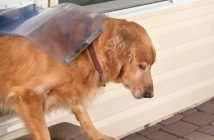What Is Parvo
Parvo is a serious viral disease that can be deadly even if treatment is given. So, to protect your puppy from contracting pravo you need to have your puppy vaccinated against this disease.
First, let’s look at what Parvo is and what the symptoms are. Canine Parvovirus is a disease that attacks dividing cells. The most prominent location for dividing cells in your puppy’s body is the intestinal lining or the lining of the digestive system. When this disease attacks and kills these cells it causes dogs and puppies to not be able to absorb nutrients or liquids. Parvo is seen more in puppies than in adult dogs, but both can catch the disease. The reason that puppies are more affected is that they have an immature immune system.
What are the Symptoms
Symptoms of parvo include diarrhea, vomiting and lethargy. Most dogs when they are infected with parvo stop eating or have a loss of appetite, diarrhea, high fever, and depression. Their stool can be very liquid, foul smelling, usually yellow in color, and contain blood. The secondary symptoms appear as severe gastrointestinal distress, which includes vomiting and bloody diarrhea. In the later stages of pravo dehydration, shock, and many times death. Parvo in some cases may also attack a dog’s heart causing congestive heart failure. This can occur months or years after an apparent recovery from the intestinal form of the disease.
How is Parvo Transmitted?
Transmission of parvo is from one dog to another through their feces. Parvo can live for up to 9 months when the conditions are right where the feces are found. Parvo can be carried in an adult dog that shows no outward signs of parvo, but the disease can be found in their stool. The disease is not an air born type, but can be transmitted through the sole of your shoe and even birds may carry this deadly disease into your yard if they have been in contact with the infected feces.
Once parvo has invaded your yard or your home it is there to stay if you do not rid the area of the disease. Then, your next dog can and probably will become infected. There is only one way to kill the disease from your home, clothing, or back yard. You will need to use bleach! Soap, water or other household cleansers for your home or clothing will not kill pravo. You should use a mixture of 1/3 bleach to 2/3 water and disinfect everything that the dog has been around including your clothing, his food and water dish and any bedding that he has used. In your yard, soak the entire area with the bleach solution. You can also talk with your veterinarian and purchase a disinfectant such as Parvosan or Roccal which is designed for treating any areas that have been exposed to parvo.
What is the Treatment and Prevention for Parvo?
If your dog does become infected with parvo he has a 5o/50 chance of recovery. But, he will more than likely be weak and easily susceptible to illness.
The best prevention begins when your puppy is 6-8 weeks of age. You should also keep your puppy away from any other dogs until he has received his last shot for parvo. The parvo vaccine is usually included with the distemper vaccine.
All dogs and puppies are susceptible to parvo but there are a few breeds that seem to be more susceptible than others. These include Rottweilers, Doberman Pinschers, and other black and tan breeds. These breeds usually are more prone to contracting this disease and not recovering.
Without treatment your dog only has a 20% survival rate and with treatment an 80% survival rate. So, of course, the best medicine is to prevent the exposure and to vaccinate your puppy against this deadly disease.



